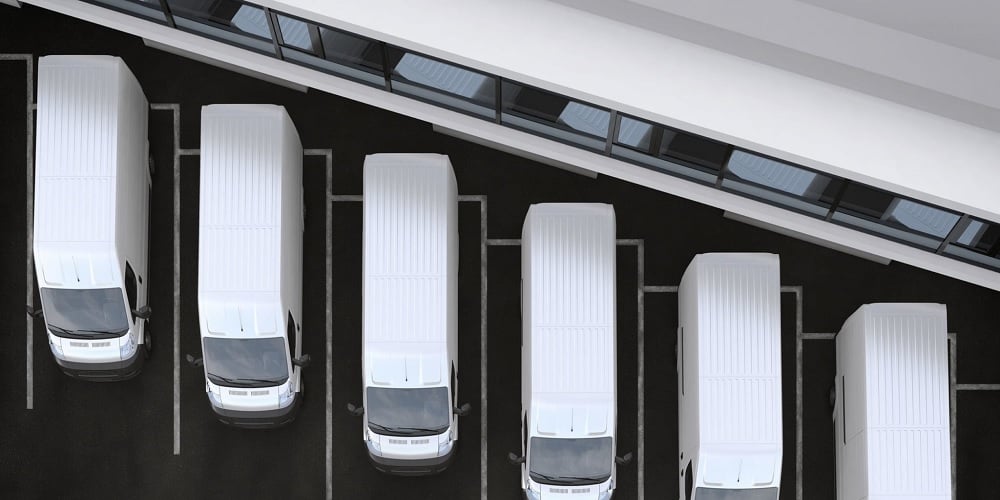Purchasing fleet vehicles the efficient way to meet demand

Fleet procurement is fast becoming one of the most complicated industries in the world. Supply chain disruptions are throwing even the best-laid plans to the wayside, with the average price per vehicle skyrocketing 18-20% higher every year.
You must ensure efficiency in your plans to meet vehicle procurement demand wherever it lies. Failure to do so may result in slower timelines and thinner bottlenecks, which may affect the efficiency of your public fleet procurement process.
But meeting said demand doesn't have to be expensive, nor does it have to be a frustrating process that saps vital resources from your organization.
The challenges of purchasing fleet vehicles to meet demand
As the demand for fleet vehicles rises, so too do procurement challenges. Procurement officers must overcome three major hurdles when acquiring fleet vehicles:
- Limited inventory: Dealerships in the US have a low supply of vehicles and lack excess inventory.
- Few incentives: Rebate programs and other discounts are no longer needed to sell inventory, which increases procurement costs for public-facing organizations.
- Upfitting costs: Steel, plywood, and other materials are in high demand and short supply, which may complicate upfitting for certain vehicles.
Complications in meeting fleet vehicle demand are here to stay. Fortunately, with a few simple strategies, you can take these speed bumps in stride, starting with effective planning.
Three strategies for efficiently purchasing fleet vehicles
Fleet vehicle procurement requires a careful hand and a great deal of intentional planning. Most professionals recommend three strategies to ensure streamlined fleet vehicle procurement.
1. Stay on top of vehicle reordering before demand rises
If you need a new fleet vehicle, you'll want to work out an acquisition much sooner than later. After all, you're not the only agency in need of a new machine. With 4.5 million new vehicles needed in the US alone, procurement pros would be wise to get in line before others.
Start by calling dealerships and other providers well in advance. Explain your circumstances and the type of vehicle that you're looking for, ensuring that you get one of the first calls when a make or model becomes available. It never hurts to be proactive!
2. Develop a vehicle life cycle strategy that embraces supply chain disruption
Vehicle life cycles largely depend on their use, age, and model. However, procurement officers would be wise to add a caveat that fights supply chain gaps and other economic disparities, thus ensuring that their agency is prepared for anything and can maintain a rightsized public fleet without losing efficiency to unseen factors.
You can create a resilient life cycle strategy for your fleet by calculating your cost of management. For example, you may want to order new fleet vehicles if the cost of ownership is high, they have more than 100,000 miles on them, or if the maintenance costs exceed the vehicle's value. Some agencies use forecasting models to determine the proper time of replacement, even several months in advance.
3. Maximize investments by cutting costs when possible
Money isn't everything in the procurement field, but it does impact a fleet's efficiency and long-term performance. Keep in mind that certain elements of fleet management may not or should not adapt to tighter budgets (such as vehicle types or routine maintenance). Still, you can save extra money without impacting the vitality of your fleet.
Four major options are available: rebates, discount programs, economies of scale, or cooperative contracts. Vehicle rebates and discount programs are drying up in an area of rising interest rates, and economies of scale may not be impactful enough to save money in the long run. However, cooperative contracts remain strong and vibrant options for public institutions in the US. In fact, local government staff members are using cooperative contracts twice as often as they did ten years ago, meaning their effectiveness and usefulness are extremely self-evident.
When you partner with a professional like Sourcewell, you can access cooperative contracts within minutes of signing up.
Efficiently purchasing fleet vehicles starts with cooperative contracts
Cooperative contracts are system enhancers that improve vehicle procurement from start to finish. With Sourcewell, you can take advantage of the many possibilities in three easy steps:
- Browse available contracts or solicitations, and select the perfect solution for your public agency.
- Use economies of scale and preset contracts to access equipment that may not normally be available at that price point.
- Continue to procure fleet vehicles in a way that sidesteps issues with supply chain disruptions or material shortages.
When you partner with the professionals at Sourcewell, you will enjoy all these benefits and many more.
Here at Sourcewell, we help public agency buyers procure fleet vehicles faster by fulfilling the time-consuming bid process for them. Through cooperative contracts, we expedite the fleet vehicle procurement process so you can better serve your teams.
Want a faster procurement process? Contact one of our specialists today to buy the fleet solutions you need!


